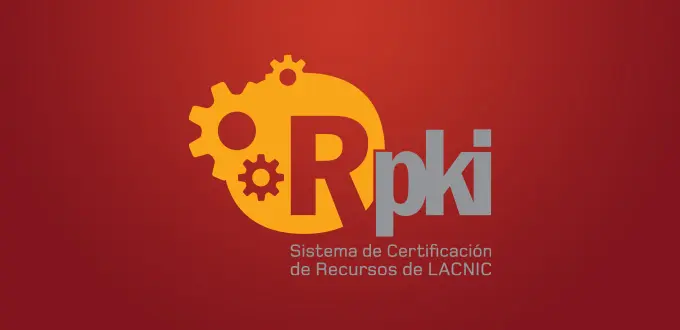The Challenge of Expanding Resource Certification in the LACNIC Region
14/07/2022

By Carlos Martinez, Chief Technology Officer at LACNIC
For the past 13 years, LACNIC has been actively working to promote the adoption of RPKI (Resource Public Key Infrastructure), a public key infrastructure that contains digital certificates to allow legitimate holders of number resources to prove that they are actually authorized to announce these prefixes.
Within the framework of the Internet Society’s RPKI Week, we participated in the panel on RPKI adoption where we shared some of the actions developed by LACNIC that have made it possible to reach 40 % of the certified resources in the Latin American and Caribbean region. However, we must further advance in the use of RPKI to ensure that the routing system is fully protected. To achieve this, it is necessary to get as close as possible to 100 % coverage.
There are two different objectives that generate confusion and need to be distinguished in relation to RPKI deployment in our region: on the one hand, the certification and creation of ROAs within the PKI for all network operators and LACNIC’s partners; while on the other hand, the implementation of the Route Origin Validation (ROV) in infrastructure equipment by large operators or carriers.
The ROV uses the data entered in the RPKI to validate that the announcements received by BGP actually represent what its holders want. Those that do not pass this test are discarded.
This distinction is important because we have a large asymmetry in the size of LACNIC’s membership. In many cases, organizations were reluctant to start creating objects in the RPKI because they thought it would be useless if large operators did not implement source validation themselves.
Therefore, we started to work with colleagues in the region. In 2012, we had the case of NAP Ecuador, which was very interested in using RPKI, not only to improve its security posture, but also to solve an operational problem: how to accept new prefixes in the IXP matrix with as little manual intervention as possible.
(Free access, no subscription required)
Finally, together with the NAP.ec team, the LACNIC team, and the collaboration of Cisco Systems, we managed to implement origin validation in NAP.ec. We organized a face-to-face activity to help NAP.ec members create their objects in LACNIC’s RPKI. I believe that was the first major milestone in RPKI’s development in our region.
Gradually, resource certification became a trend in the region.

Then, we followed with another very enriching and successful experience in Costa Rica, which later led to many other positive experiences.
The views expressed by the authors of this blog are their own and do not necessarily reflect the views of LACNIC.